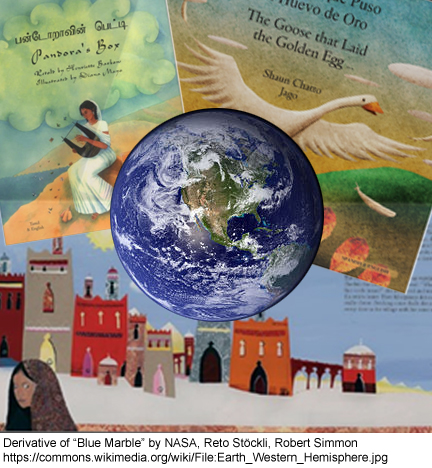
March 17th marks the start of World Folk Tales & Fables Week 2019. What kind of valuable life lessons can be learned from folk tales and fables? Read on for a free lesson plan and activity ideas to help bring world folk tales and fables into your home or classroom.
Folk Tale or Fable?

Folk tales are stories passed down through generations of people. Fables are just one type of folk tale – short stories, often featuring talking animals, that teach a lesson. These fables are crafted to appeal to children. Aesop, believed to have lived around 560 BC, is one the most well-known fable creators.
The simplified story lines and characters of folk tales and fables make them great for teaching life lessons to little ones. Stories tend to develop quickly, with a central conflict and a satisfying resolution. Some of these tales feature rhymes or line repetition, making them practically irresistible to the youngest of readers.
What Do Folk Tales Have to Teach Us?
In addition to the classic morals taught (think rewards of hard work in The Little Red Hen and the Grains of Wheat, and why Goldilocks should have used her manners with those bears), folk tales are a great chance to introduce kids to other cultures and times.

Travel to a far-off time and land with Chin Wah and his magical golden fish (The Dragon’s Tears), or meet the famous Bengali woman (in Buri and the Morrow) who must outsmart the forest creatures who want to gobble her up!
Reading world folk tales and fables with the kids in your family or classroom is a great opportunity to teach, bond and work on literacy skills.
Folk Tales: Resources & Recommendations
Download our free multicultural lesson plans. Several of these plans incorporate folk tales and fables to build literacy stills and explore different cultures. For example, the “Language, Customers, Culture in India” lesson plans utilize the folk tale Buri and the Marrow as a way to learn about Indian cultures and customs with your students. The “Building Community in the Classroom” lesson plans use The Giant Turnip to promote discussion about community and cooperation, while examining diverse countries.
Explore our site for numerous bilingual world folktales and fables in many languages. We also offer the Myths and Legends collection (bilingual versions of Pandora’s Box, Isis and Osiris, Beowulf, The Children of Lir), which can be a good starting point for older children to explore classic stories from other cultures.
What are your favorite folk tales? Comment below and let us know!
Image is derivative of “Blue Marble” by NASA, Reto Stöckli, Robert Simmon
